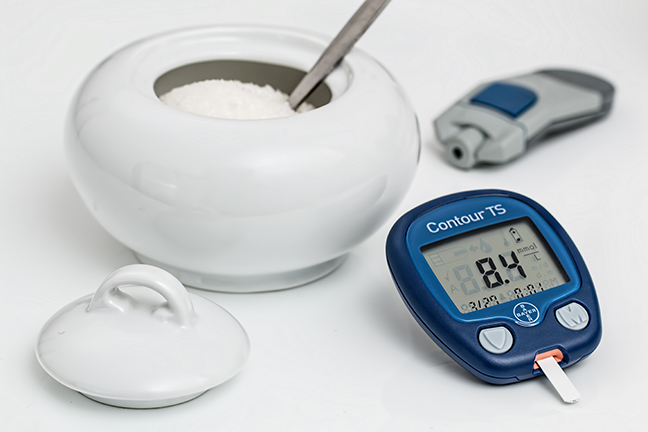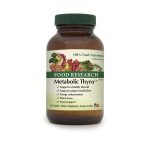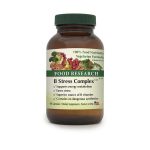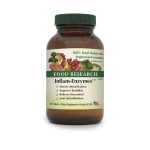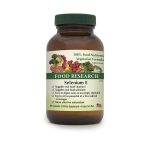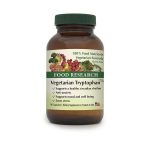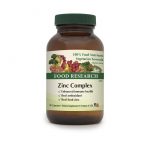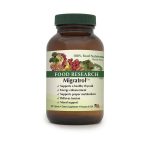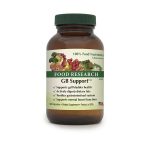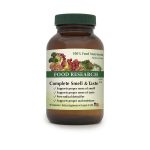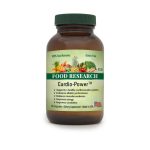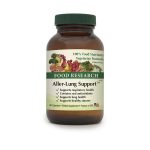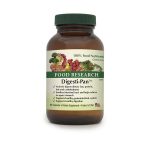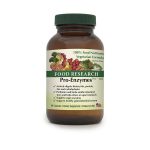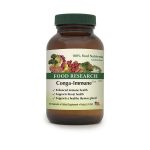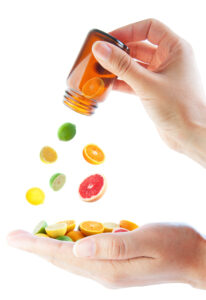In the United States, the incidence of diabetes in adults rose by 33% from 1990 to 1998 [1] and still appears to be on the rise. Obesity is considered one of the major risk factors for diabetes [2-4], but that may be more due to dietary choices, including quantity of food, and lack of exercise than weight itself. Proper food nutrition can play an important role in this disorder.
Diabetes mellitus is a “syndrome characterized by hyperglycemia resulting from absolute or relative impairment in insulin secretion and/or insulin action…Patients with type I diabetes mellitus (DM), also known as insulin-dependent or juvenile onset diabetes, may develop diabetic ketoacidosis. Patients with type II DM, also known as non-insulin-dependent DM may develop non-ketotic hyperglyemic-hyperosmolar coma. Common late microvascular complications include retinopathy, nephropathy, and peripheral and autonomic neuropathies. Macrovascular complications include atherosclerotic coronary and peripheral arterial disease” [3]. Type I DM typically occurs in those less than 30 years of age, while type II usually occurs in those above age 30. Type I is normally due to low insulin production due to the destruction of pancreatic beta cells [4]. Type II is normally due to insulin resistance (diminished tissue sensitivity to insulin) and impaired beta cell functioning [4]. Obesity is more common in type II [2,3]. Other types include gestational diabetes, malnutrition-related diabetes mellitus, impaired glucose tolerance, as well as some due to genetics, medications, and hormones [4]. It is estimated that 7,000,000 Americans with type II are undiagnosed [4].
Nutrition can affect those with type of diabetes. The human brain primarily runs on glucose [5]. Nearly all calories, be they from bananas, steak, or candy bars, are converted by the body into glucose (blood sugar). If the amount of glucose converted is excessive, this will trigger the body’s need to secrete insulin. But just because nearly all calories in foods are converted to glucose, does not make all foods equal; some foods take longer to be converted. Those that take longer to convert are known as foods with a lower glycemic effect, whereas those that convert quickly are known to have a higher glycemic effect. Those foods with a low enough glycemic effect do not cause the body to need to secrete insulin because they provide glucose at such a rate that it is consumed rather than accumulated.
Excessive glucose causes the accumulation of glycogen in non-insulin dependent tissues [4]. Glycoxidation is “a process that occurs with elevated blood glucose levels. Another pathway that results in the modification of LDL proteins involves the formation of Amadori products. An adequate amount of antioxidants from the diet or supplements may help prevent or delay the occurrence of diabetic late syndrome” [6]. The formation of Amadori products is a type of nonenzymatic glycosylation [4], and is reversible. Price et al have stated, “The Maillard or browning reaction between sugars and proteins leads to the formation of chemical modifications and cross-links in proteins, known as advanced glycation end-products (AGEs). These products contribute to the age-dependent chemical modification of long lived proteins, and accelerated formation of AGEs during hyperglycemia is implicated in the development of diabetic complications” [7] as “sugars react with amino groups in proteins, lipids, and nucleic acids to produce advanced glycation end products” [8].
Diet and Lifestyle Factors
As glycation end products tend to accumulate as the result of disorders of sugar metabolism such as diabetes, it is generally believed that a diet low in refined carbohydrates is a logical choice for those with diabetes. Diets naturally high in vitamin C have been shown to result in reduced protein glycation [9]. Though this would not stop all glycation end products from forming and accumulating, it may reduce their formation and possibly delay the onset of some of the complications associated with diabetes.
The average adult who develops diabetes consumes less fruits and vegetables than those who do not [10]. Interestingly, one study found that dietary carotenoid intake was inversely related to fasting plasma glucose concentrations; that plasma beta-carotene concentrations were inversely associated with insulin resistance; and that dietary lycopene was directly related to baseline serum concentrations of nonesterified fatty acids [11]. Dietary carotenoids primarily come from vegetables and to a lesser degree from fruits. It should be noted that a large study that tested isolated betacarotene found that it did not help prevent diabetes [12].
Reducing weight, increasing consumption of fiber, exercise, and reducing the intake of saturated fats also reduce the risk of developing diabetes, even for those with impaired glucose tolerance [13]. Consumption of whole grains is also associated with reduced risk of developing diabetes [14]; this could be due to the natural B vitamins, lower glycemic effect, or simply the fiber of whole grains compared to refined grains. Similarly, nut consumption has been found to be inversely associated with the risk of type II DM [15].
One risk factor for type I DM is early exposure to cow’s milk, especially if a sibling has sensitivity to milk [16,17]. It has been reported that wheat, soy, and perhaps other foods can provoke pancreatic beta cell destruction through immunological mechanisms in some [18]. In type I diabetes mellitus, hyperglycemia results in the intracellular accumulation of the sugar alcohol sorbitol by the action of aldose reductase on glucose [19]. Based on this evidence, sorbitol and similar alcohol sugars should probably be avoided. It has been proposed that insulin dependent diabetes may be started by an immunization from environmental proteins such as a virus with molecular mimicry with the islet cell enzyme glutamic acid dehydrogenase, initiating the process [20]. In the islets, GABA inhibits glucagon secretion. In susceptible individuals the anti-enzyme glutamic acid dehydrogenase immune response may be sufficient to initiate islet cell autoimmunity and damage. Autoantibodies to insulin and islet cell cytoplasmic glycolipid antigens result and beta cells are lost. Officially, type I DM occurs only after destruction of the bulk of the insulin-secreting beta cells. The entire process usually takes years to complete but is faster in young children than adults. Quite recently a Finnish study found that enterovirus strains were present in 11 of 12 children considered to be pre-type I diabetic [21].
The probable factors predisposing one towards type II DM include obesity, genetics, poor diet, and hypoglycemia [1,2,10,18]. Furthermore, over-consumption of high glycemic foods is probably the factor that has lead to increases in diabetes throughout the world [2], specifically, items such as refined carbohydrates, sugar, sugar-substitutes, soft drinks, white pasta, white rice, white flour, alcohol, and combinations of those substances. Lower glycemic foods generally include those high in fats, proteins, fiber, and complex carbohydrates; however those at risk for diabetic nephropathy should at least moderately-restrict proteins [4,18]. Eating frequent small meals can also be helpful in keeping blood glucose levels in more desired ranges [18].
Low intensity exercise, such as walking, has been found to significantly reduce blood-glucose levels in type II DM [22]. Caloric restriction and exercise are among the best ways to reduce insulin resistance [23]. Additionally, “high carbohydrate, high fiber diets increase insulin sensitivity and decrease insulin requirements” [4] while caffeine may decrease it [24]. Thus caffeine itself is not advised for diabetics.
Although alcohol itself does raise blood sugar, one large study found that men who drink alcohol moderately have a lower risk of contracting diabetes compared with those who drink heavily or those who drink very little [26].
Raised plasma nonesterified fatty acids are a risk factor for the deterioration of glucose tolerance from normal to impaired, and from impaired to type II DM. Circulating concentrations of nonesterified fatty acids are elevated in obesity, Type II diabetes and in uncontrolled Type I diabetes or insulin deficiency [25].
Whether it has to do with increased walking, caloric restriction, increased consumption of wild plants, and/or increased consumption of animal glands, Australian Aborigines who forsake the Western lifestyle for a native one have been able to dramatically reverse complications associated with type II diabetes (18,27).
Beneficial Food Nutrients
Many nutrients have been found to be of benefit to people with diabetes. B vitamins are involved in the production of energy as well as other metabolic processes [23]. B complex vitamins, potassium, and trace minerals are often recommended for diabetics, particularly for the prevention and reversal of oxidative-dysoxygenative insulin dysfunction [28]. Many food nutrients have been reported to have prevent the accumulation of advanced protein glycation end-products [29], which can be a major problem for diabetics.
Thiamin (vitamin B-1) may be helpful for some with diabetic retinopathy [18]. Benfotiamine, a lipid soluble derivative of thiamin, found in leeks, onions, garlic, and shallots can be helpful for many diabetics.
While niacinamide, which can be found in food, has been shown to be helpful for insulin-dependent diabetics (type I DM), niacin, which seldom exists in any substantial quantity in food [23]), tends to worsen (increase) glucose concentrations for those non-insulin dependent diabetics (type II DM) [18]. Niacinamide can also inhibit glycation.
In non-diabetics, a subclinical deficiency of vitamin B-6 can cause insulin resistance [18]. Both type I and type II DM sometimes have marginal B-6 levels [18]. Vitamin B-6 deficiency has been associated with impairments in gluconeogenesis and abnormal glucose intolerance. Vitamin B-6 has been recommended to help deal with glycation [30]. Furthermore, it or its derivatives have been shown to have anti-glycation effects [7].
One study found that serum levels of females with type I DM tended to be low in folate and high in homocysteine [31]. Folate is the form found in food, and has less affinity for serum folate-binding proteins than folic acid, the form most commonly found in nutritional supplements [16]. Thus folate may be the preferred from.
It should be noted that it has been shown that up to 2,000 mg per day of metformin (Glucophage) can increase total homocysteine levels and decrease vitamin B-12 and folate levels [32]. Thus it is logical that diabetics on that medication consider taking food vitamin B-12 and food folate. Furthermore it has been found that methylcobalamin, the type of vitamin B-12 found in food [23], may ameliorate the development of diabetic neuropathy [18].
Increasing plasma vitamin C through dietary means has been suggested as an important way for the public to reduce the prevalence of diabetes mellitus [33]. Diabetics have vitamin C levels 30% (or more) lower than non-diabetics and part of this may be due to increased urinary excretion [18]. Vitamin C containing food has over 15.6 times the ORAC of isolated ascorbic acid [34]. Since food vitamin C has proven antioxidant effects in vivo [35] and isolated ascorbic acid does not [36], it seems reasonable to conclude that food vitamin C both prevents oxidative damage and ‘cleans up’ damage much better than isolated ascorbic acid.
Activated vitamin D is required by the islet cell to be able to secrete insulin normally. One study found that vitamin D status related directly to the capacity to secrete insulin and inversely to glucose tolerance [37].
A double-blind study found that vitamin E improves endothilial vasodilator function in type 1 diabetics [38]. High vitamin E vegetable oil has been found to have significant anti-glycation effects [19]. Consumption of vitamin C and vitamin E prior to a high fat meal has been found to reduce the production of meal-induced C-reactive protein in diabetics [39]. One study found there is an increase in lipid peroxidation after the correction of diabetic ketoacidosis, and administration of antioxidant vitamins, like vitamin E, during the treatment of diabetic ketoacidosis may be of benefit in minimizing oxidative stress and possibly preventing complications of type II diabetes mellitus [40]. Consumption of vitamin E in foods was recently found to reduce the incidence of type II DM [41].
One study found that 30% of those with type II DM in its study were deficient in zinc, and that supplementation with zinc alone, chromium alone, and zinc with chromium resulted in significant reduction of plasma thiobarbituric acid reactive substances (TBARS) by 13.6%, 13.6%, and 18.2% respectively [42]; no adverse side effects were noted.
Zinc is involved in insulin physiology. It enhances the magnitude of the binding of insulin to the receptor, but simultaneously inhibits the degradation of insulin by the liver plasma membranes. Zinc modulates insulin’s actions by stimulating lipogenesis in adipocytes in a synergistic relationship with insulin [43]. Zinc is a cofactor of key enzymes in glucose metabolism [23]. Some feel that insulin resistance may be related to zinc deficiency by impairment of insulin secretion by the pancreas; interference in insulin-receptor binding; decreased insulin-receptor synthesis; and abnormal glucose carrier structure and/or translocation inside the cell [43]. It is unclear if diabetic patients malabsorb zinc or are unable to compensate for the excessive urinary loss [43,44]. It has been speculated that zinc deficiency may account for impaired wound healing, decreased cell-mediated immunity and taste acuity in diabetic subjects [43]. One researcher noted that although many diabetics are low in zinc, supplemental zinc, as typically used in mineral salt forms, does not apparently absorb well enough to raise zinc levels [44]. On the other hand, high zinc yeast has been found to be better absorbed than non-yeast forms [45].
Vanadium is found in skim milk, vegetable oils, many vegetables, grains and cereals. Mushrooms, parsley, dill and black pepper are particularly rich in vanadium [46]. Daily consumption in humans ranges from 10 µg to 2 mg [47]. One human study involving 11 type II diabetics found that vanadium significantly improved glycemic control, and fasting plasma glucose was reduced from 194 to 155 mg/dl, hemoglobin A1C from 8.1 to 7.6%, and fructosamine from 348 to 293 µmol/l and reduced endogenous glucose production by approximately 20%, which correlated with a reduction in fasting plasma glucose [48]. It has been reported that organic forms of vanadium are safer, more absorbable and able to deliver a therapeutic effect up to 50% greater than inorganic forms [47].
A French study found that diabetics had significantly lower levels of selenium than controls [49]. Reduced selenium concentrations in the red blood cells of the diabetic patients have been found to contribute to impaired hemorrheology [50]. One study found that high yeast selenium was 123.01 more effective than selenium methionine in preventing nonenzymatic glycation in diabetics [29]. Glycation end-products tend to also accumulate in the brains of those who develop Alzheimer’s or similar forms of dementia [51]. This same study found that high selenium yeast was more effective than ascorbic acid, niacinamide, carnosine, tocopherol, and pyridoxal [29]. Selenium “is the co-factor of glutathione peroxidse (Se GSHpx). Low Se GSHpx is activity, observed in diabetic patients, is associated with thrombosis and cardiovascular complications” [52].
Hypophosphatemia (low phosphorus levels) is clinically associated with diabetes mellitus [23]; “Excessive amounts of phosphorus can also be lost in the urine of uncontrolled diabetics who have polyuria and acidosis” even if plasma phosphorus appears to be normal [23]. Vegetables and fruits are high in phosphorus and thus consumption of them would appear to be a logical way to improve phosphorus levels.
Some research has suggested that lithium can be helpful for diabetics [54]. Min Hu, a medical doctor who has looked into this for eight years, reported, “Lithium has some insulin-like effects. Experiments in vivo demonstrate that lithium has little effect on insulin secretion, but does have an effect on reduction of insulin resistance. Experiments in vitro further demonstrate that lithium has some insulin-like effects, such as lithium’s ability to promote glucose uptake and glycogenesis in adipocytes and in hepatocytes. 1) Lithium inhibits hepatic gluconeogenesis and phosphoenol pyruvate carboxykinase gene expression, which can lower the blood glucose. 2) Lithium has some antioxidative effects, which can enhance insulin action in target cells. 3) Lithium increases DNA replication, polyamine content and insulin secretion by pancreatic beta cells in rats” [55]. Hu, et al. wrote, “restoration of lithium to control levels in the liver and muscle of diabetic animals is associated not only with decreased blood glucose but also with reduced oxidative stress, and consequently with the protection of insulin-secreting pancreatic islet cells” [56]. Caution is advised, however, as lithium can induce diabetes insipitus in some individuals. “Fortunately, lithium toxicity is both entirely preventable and easily treatable” [57] with flaxseed oil and vitamin E [57].
Chromium and Saccharomyces Cerevisiae
Insufficient dietary intakes of chromium can lead to diabetes [58]. “Chromium is generally accepted as an essential nutrient that potentiates insulin action, and thus influences carbohydrate, lipid, and protein metabolism” [53]. Food chromium is safer than some non-food forms, like chromium picolinate [59]. One study found that yeast chromium was as effective as 8.62 time as much chromium chloride in causing improvement in glucose control [60]. And unlike rock-forms of chromium, Saccharomyces cerevisiae yeast-forms also contains a variety of essential vitamins, minerals, and amino acids [61].
“The biologically active form of chromium, sometimes called glucose tolerance factor or GTF, has been proposed to be a complex of chromium, nicotinic acid, and possibly the amino acids glycine, cysteine, and glutamic acid. Many attempts have been made to isolate or synthesize the glucose tolerance factor; none have been successful” [53]. Chromium is not naturally found in the body in the commonly supplemented forms such as chromium picolinate or chromium chelate. Only 1% or less of inorganic chromium is absorbed versus 10-25% of chromium GTF [62].
Scientific research has concluded that “supplementation of well-controlled type 2 diabetics with Cr-enriched yeast is safe and can result in improvements in blood glucose variables and oxidative stress” [63] and that “dietary high Cr yeast supplementation improved glucose tolerance, probably through a decrease in hepatic extraction of insulin” [64]. This type of food chromium really is the best form for supplementation for diabetics.
In Iraq, barley bread is commonly used in the treatment of diabetes because of its ability to modulate the glycemic response to carbohydrate ingestion, and slow weight loss and excessive water consumption. Animal studies have verified that barley bread does contain significant amounts of food chromium [65], which may account for some of its effectiveness.
Chromium in food has accompanying food factors such as protein chaperones [66,67] which aid in absorption of chromium. Chromium mineral salts are chemical compounds which are rocks or synthetically produced. Chromium rocks are poorly absorbed by humans; some are less than 1% absorbed [62]. Chromium picolinate is a human-made substance, apparently created by Gary Evans [68]. Picolinic acid is used in herbicides [69]; furthermore “picolinic acid is an excretory or waste product. It is not metabolized by or useful to the body” [70].
Saccharomyces cerevisiae is also known as nutritional or baker’s yeast and it holds several unique advantages for diabetics. Perhaps the first is that it is the most natural medium in which to grow the GTF form of chromium. Additionally, Saccharomyces cerevisiae has proinsulin-like substances; “the specificity of the yeast processing enzymes is so similar to the proinsulin converting enzymes in the human pancreatic beta-cell that it allows the processing of the mini-proinsulin to insulin” [71]. Saccharomyces cerevisiae also contains a variety of insulin precursors that can be helpful for diabetics [72]. In 1999, the Nobel Prize was awarded for discovering that protein chaperones are necessary for mineral transport into cellular receptors. Saccharomyces cerevisiae, like other mineral containing foods, naturally contains protein chaperones and other factors that aid in mineral absorption [66,67]. These are lacking in mineral salts.
Saccharomyces cerevisiae is beneficial to humans and can help combat various infections [73], including Candida albicans.It should also be noted, that W. Crook, M.D., who was perhaps the nation’s best known expert on Candida albicans, wrote “yeasty foods don’t encourage candida growth…Eating a yeast-containing food does not make candida organisms multiply” [74]. It should also be noted that nutritional yeast is not the same as brewer’s yeast which is essentially a waste by-product. Saccharomyces cerevisiae naturally contains vitamins B-1, B-2, B-6, niacinamide (B-3), folate (B-9), and pantothenate (B-5) plus phosphorus, potassium, and a variety of trace minerals.
Rice Bran, Cinnamon, Fenugreek, Gymena, and Other Herbs Substances
Various types of rice bran have been found to help lower glucose levels for people with type I or type II DM [75]. Due to its high fiber and bran content, brown rice may be an ideal food for some with diabetes, and is so used by some in Chinese medicine [73].
Cinnamon Bark Cinnamon cassia has been found to improve fasting blood glucose (FBG) [76]. Another recent study confirmed that natural ground cinnamon in amounts as little as 1 gram per day was effective in reducing fasting serum glucose levels for those with type II diabetes [77]. Cinnamon is considered to be contraindicated during pregnancy [73]. Cinnamon Bark Cinnamon cassia has been found to improve fasting blood glucose (FBG) [76]. Another cinnamon study noticed FBG improvement with “significant decrease in plasma C-peptide, serum triglyceride, total cholesterol and blood urea nitrogen levels while serum high density lipoprotein (HDL)-cholesterol levels were significantly increased” [78] (HDL is known as “good cholesterol”). “Cinnamon extract regulates glucose transporter and insulin-signaling gene expression… and this regulation could contribute to the potential health benefits of CE” (cinnamon extracts) [79].
Fenugreek Seed Trigonella foenum-graecum has been used as part of a program for blood sugar management. The PDR states, “Fenugreek reduces blood sugar” [80]. A human study “showed that FBS, TG and VLDL-C decreased significantly (25 %, 30 % and 30.6 % respectively) after taking fenugreek seed soaked in hot water” [81]. An animal study concluded that “fenugreek oil significantly improved blood glucose levels, glucose intolerance, and insulin sensitivity compared to the diabetic group… diabetic rats showed low activities of superoxide dismutase, catalase, glutathione peroxidase, and reduced glutathione content in kidney, which were restored to near normal levels by treatment with fenugreek oil. The increased levels of lipid peroxidation, creatinine, albumin, and urea in diabetic rats decreased significantly in diabetic rats treated with fenugreek oil. Diabetic rats treated with fenugreek oil restored almost a normal architecture of pancreas and kidney. In conclusion, this study reveals the efficacy of fenugreek oil in the amelioration of diabetes, hematological status, and renal toxicity which may be attributed to its immunomodulatory activity and insulin stimulation action along with its antioxidant potential” [82]. A recent study “confirms the anti-hyperglycaemic and anti-dyslipidemic properties of 4-hydroxyisoleucine, an unusual amino acid isolated from Trigonella foenum-graecum seeds, for the first time in a well-characterised model of type II diabetes… significantly (p < 0.05) declined their elevated blood glucose, plasma insulin, triglycerides, total cholesterol, low-density lipoprotein-cholesterol levels and raised their declined plasma high-density lipoprotein-cholesterol level. These results indicate that 4-hydroxyisoleucine exhibits significant potential as an anti-diabetic agent by suppressing progression of type II diabetic states that is suggested by enhancement of insulin sensitivity and glucose uptake in peripheral tissue.” [83]. “Diosgenin present in fenugreek improves glucose metabolism by promoting adipocyte differentiation and inhibiting inflammation in adipose tissues… Trigonella foenum-graecum (fenugreek) can ameliorate hyperglycemia and diabetes” [84].
Goat’s Rue/French Lilac Galega officinalis was the basis for the anti-diabetic medication Metformin (but Metformin is a chemical isolate) [85]. “Guanidine is an active ingredient extracted from Galega officinalis…we observed that guanidine decreased plasma glucose in STZ rats” [86]. “Galega officinalis (galega, Goat’s Rue, French Lilac) is well known for its hypoglycaemic action and has been used as part of a plant mixture in the treatment of diabetes mellitus… During pharmacological investigations … a weight reducing effect of galega was discovered… together with its established hypoglycaemic effects, galega has a novel weight reducing action that, in normal mice, is largely independent of a reduction in food intake. The mechanism of the weight reducing action of galega is unclear but involves loss of body fat” [87].
One study found that guar gum improved long-term glycemic control, postprandial glucose tolerance, and lipid concentrations. This result suggests that insulin secretion is enhanced by guar gum as reflected by an increased C-peptide [88]. Another study found that type I diabetics taking guar gum had a significant reduction in glucose, hemoglobin A1c, low LDL cholesterol and the LDL cholesterol/HDL ratio [89].
The herb Gymnema sylvestre is sometimes used for diabetics. It has been shown to reduce sweet taste sensations [90]. However, clinically, some natural health results suggest better success combining it with chromium GTF, vanadium, and food multi-vitamins. Gymnema Leaf and Callus “Gymnema sylvestre is a plant that has found use in the traditional medicine of a number of societies for the management of blood sugar disorders” [91]. “The phyto-constituents of Gymnema sylvestre are used in the treatment of diabetes and obesity” [92]. Various animal studies have found that it has protective effects for the pancreas of diabetics. It contains substances that researchers have concluded “showed anti-diabetic activities through regenerating beta-cells” [93].
Other researchers have noted, “Indian plants which are most effective and the most commonly studied in relation to diabetes and their complications are: Allium cepa, Allium sativum, Aloe vera, Cajanus cajan, Coccinia indica, Caesalpinia bonducella, Ficus bengalenesis, Gymnema sylvestre, Momordica charantia, Ocimum sanctum, Pterocarpus marsupium, Swertia chirayita, Syzigium cumini, Tinospora cordifolia and Trigonella foenum graecum. Among these we have evaluated M. charantia, Eugenia jambolana, Mucuna pruriens, T. cordifolia, T. foenum graecum, O. sanctum, P. marsupium, Murraya koeingii and Brassica juncea. All plants have shown varying degree of hypoglycemic and anti-hyperglycemic activity” [94].
For those with type I DM, it is possible that anti-viral herbs such as olive leaf and/or wild oregano may have a possible role. Since the hepatitis C virus can cause or at least contribute to insulin resistance, those same herbs may be of help to some with DM II [95].
Vanadium and Acetyl-l-carnitine
N-Aceytl-L-Cysteine (NAC) (plant source) is a more stable form of the amino acid l-cysteine because it has an acetyl group (CH3CO) attached. It seems to help with high glucose (HG) levels. One study stated “Cotreatment with N-acetylcysteine reduced the effect of HG on aromatase gene expression, suggesting that hyperglycemia may perturb biochemical networks because of the elevation of oxidative stress” [96]. Another study concluded, “Our results clearly demonstrate protective effect of NAC is mediated through attenuation of oxidative stress and apoptosis, and suggest therapeutic potential of NAC in attenuation of diabetic neuropathy” [97]. Another diabetic study concluded that the “antioxidant, N-acetyl-L-cysteine, suppressed glucose-induced osteopontin expression by decreasing ROS concentration” [98] . “Epidemiological studies have suggested that the levels of advanced glycation end products (AGEs) are enhanced in patients with diabetes mellitus and during the aging process… Our data showed that APP {amyloid precursor protein} was up-regulated by AGEs in vitro and in vivo, and pretreatment of cells with an ROS inhibitor (N-acetyl-L-cysteine) blocked the effects of AGEs” [99].
Vanadium is a mineral believed to support healthy blood levels. Vanadium “is used in pharmacological quantities to potentiate the effect of insulin” [100]. Studies suggest that vanadium improves fasting blood glucose levels [18]. Vanadium in a ferment “can effectively lower blood glucose levels of diabetic rats” [101]. Vanadium may help with carbohydrate metabolism and seems to have “insulin-like effects” [102]. “Vanadate forms compounds with other biological substances” [103]. “Vanadium has been postulated to play a role in the regulation of (NaK)-ATPase, phosphoryl transferase enzymes, adenylate cyclase, and protein kinases; as an enzyme cofactor in the form of vandyl and in hormone, glucose, lipid, and tooth metabolism” [103]. Vanadium in foods is found in an organic form. Vanadium in Food is safer than non-food forms and also appears to be about 50% more effective [104].
A Note About Synthetics
The American Diabetes Association does not recommend multi-vitamin, multi-mineral formulas for diabetics, though the HCF Nutrition Foundation does [4]. However, neither of them (and they looked at formulas containing synthetics and/or inorganic mineral salts) has actually apparently examined the role of 100% food multi-vitamin, multi-mineral formulas which certain natural health practitioners prefer.
Niacin, which is normally a synthetic form of vitamin B3, is not advised for diabetics because of its induction of insulin resistance [105]. Diabetics, more than most people, really do need to insure that the vitamins and minerals that they take are food and not synthetic.
Conclusion
Many natural health professionals have learned that foods, and high nutrien food supplements, can be of assistance in natural blood sugar control.
With regard to those food nutrients that have been shown to inhibit glycation, like in the case of Down Syndrome and Alzheimer’s [29], an important therapeutic factor to consider is that it would seem wise to administer them as soon as possible after diagnosis of diabetes and regularly through the sufferer’s lifetime when attempting to prevent diabetic complications.
“To be effective in the long term, the nutritional plan must be individually tailored. Readily available, pre-printed diet sheets…are doomed to eventual failure” [4], which is one of the reasons why natural interventions must be tailored to the individual. And why individuals with diabetes should seek successful, experienced health professionals.
Most diabetics need to eat more fruits and vegetables and to do more exercise. And nearly all diabetics will benefit from properly balanced food multi-vitamin, multi-mineral formulas that contain adequate amounts of food chromium and food vanadium as well as additional food nutrients with proven antiglycation properties. These changes can not only frequently help to improve blood sugar scores, they may also contribute to possible prevention of various complications.
REFERENCES
- Diabetes increasing. Nutr Week, 2001;31(5):7
- Rosenthal AD, Jin F, Shu XO, Yang G, Elasy TA, Chow WH, Ji BT, Xu HX, Li Q, Gao YT, Zheng W. Body fat distribution and risk of diabetes among Chinese women. Int J Obes Relat Metab Disord. 2004 Feb 10
- Beers MK, Berkow R, eds. The Merck Manual, 17th ed. Merck Research Laboratories, Whitehouse Station (NJ), 1999
- Anderson JW. Nutritional Management of Diabetes Mellitus. In Modern Nutrition in Health and Disease, 9th ed. Williams & Wilkins, Balt., 1999:1365-1394
- Guyton AC, Hall JE. Textbook of Medical Physiology, 9th ed. W.B. Saunders, Phil., 1996
- Meli M, Frey J, Perier C. Native protein glycoxidation and aging. J Nutr Health Aging. 2003;7(4):263-266
- Price DL, Rhett PM, Thorpe SR, Baynes JW. Chelating activity of advanced glycation end-product inhibitors. J Biol Chem. 2001;276(52):48967-48972
- Stahl W, Sies H, Antioxidant Defense: Vitamins E and C and Carotenoids. Diabetes. 1997;46(Suppl.2):S14-S18
- Boeing H, Weisgerber UM, Jeckel A, Rose HJ, Kroke A. Association between glycated hemoglobin and diet and other lifestyle factors in a nondiabetic population: cross-sectional evaluation of data from the Potsdam cohort of the European Prospective Investigation into Cancer and Nutrition Study. Am J Clin Nutr. 200071(5):1115-1122
- Ford ES, Mokdad AH. Fruit and vegetable consumption and diabetes mellitus incidence among US adults. Prev Med, 2001;32:33-39
- Ylonen K, Alfthan G, Groop L, Saloranta C, Aro A, Virtanen SM. Dietary Intakes and Plasma Concentrations of Carotenoids and Tocopherols in Relation to Glucose Metabolism in Subjects at High Risk of Type 2 Diabetes: The Botnia Dietary Study. Am J Clin Nutr, 2003;77:1434-1441
- Liu S, Ajani U, Chae C, Hennekens C, Buring JE, Manson JE. Long-Term-Carotene Supplementation and Risk of Type 2 Diabetes Mellitus: A Randomized Controlled Trial. JAMA, 1999;282(11):1073-1075
- Tuomilehto J, et al. Prevention of type 2 diabetes mellitus by changes in lifestyle among subjects with impaired glucose tolerance. N Eng J Med, 2001;344(18):1343-1350
- Montonen J, Knekt P, Jarvinen R, Aromaa A, Reunanen A. Whole-Grain and Fiber Intake and the Incidence of Type 2 Diabetes. Am J Clin Nutr, 2003;77:622-629
- Jiang R, Manson JE, Stampfer MJ, Liu S, Willett WC, Hu FB.. Nut and Peanut Butter Consumption and Risk of Type 2 Diabetes in Women. JAMA, 2002;288(20):2554-2560
- Gottleib S. Early exposure to cow’s milk raises risks of diabetes in high risk children. Diabetes, 2000;49:1657-1665
- Virtanen SM, et al. Cow’s milk consumption, HLA-DQB1 genotype, and type1 diabetes: A nested case-control study of siblings of children with diabetes. Diabetes, 2000;49:912-917
- Werbach MR. Diabetes Mellitus. In Textbook of Nutritional Medicine. Third Line Press, Tarzana (CA), 1999:320-339
- Cunningham JJ, Mearkle PL, Brown RG. Vitamin C: an aldose reductase inhibitor that normalizes erythrocyte sorbitol in insulin-dependent diabetes mellitus. J Am Coll Nutr. 1994;13(4):344-350
- MacLaren, N. Immunology of Diabetes Mellitus. Ann Allergy. 1992;68:5-9
- Salminen KK, Vuorinen T, Oikarinen S, Helminen M, Simell S, Knip M, Ilonen J, Simell O, Hyoty H. Isolation of enterovirus strains from children with preclinical Type 1 diabetes. Diabet Med. 2004;21(2):156-164
- Fritz T, Rosenquist U. Walking for exercise-immediate effect on blood glucose levels in type 2 diabetes. Scand J Prim Health Care, 2001;19:31-33
- Shils ME, Olson JA, Shike M. Modern Nutrition in Health and Disease, 9th ed. Williams & Wilkins, Balt., 1999
- Keijzers GB, Tack CJ, De Galan BE, Smits P. Caffeine Can Decrease Insulin Sensitivity in Humans. Diabetes Care. 2002;25(2):364-369
- Amery CM, Nattrass M. Fatty Acids and Insulin Secretion. Diabetes Obes Metab, 2000;2:213-221
- Diabetes and Alcohol Consumption. Nutr Week, 2000;30(4):7
- O’Dea K. Traditional diet and food preferences of Australian aboriginal hunter-gatherers. Philos Trans R Soc Lond B Biol Sci. 1991 Nov 29;334(1270):233-240; discussion 240-241
- Ali M. Beyond insulin resistance and syndrome X: The oxidative-dysoxygenative insulin dysfunction (ODID) model – Part III. Townsend Letter for Doctors & Patient 2002;232:114-118
- Thiel R.J., Fowkes S.W. Can cognitive deterioration associated with Down syndrome be prevented? Med Hypo, 2005; 64(3):524-532
- Hofmann MA, Lalla E, Lu Y, Gleason MR, Wolf BM, Tanji N, Ferran LJ Jr, Kohl B, Rao V, Kisiel W, Stern DM, Schmidt AM. Hyperhomocysteinemia enhances vascular inflammation and accelerates atherosclerosis in a murine model. J Clin Invest. 2001;107(6): 675-683
- Saladri S, et al. Homocysteine, serum folate and vitamin B12 in very young patients with diabetes mellitus type 1. J Pediatr Endocrinol Metab, 2000;13(9):1621-1627
- Yeromenko Y, Lavie L, Levy Y. Homocysteine and Cardiovascular Risk in Patients With Diabetes Mellitus. Nutr Metab Cardiovasc Dis, 2001;11:108-116
- Sargeant LA, Wareham NJ, Bingham S, Day NE, Luben RN, Oakes S, Welch A, Khaw KT. Vitamin C and Hyperglycemia in the European Prospective Investigation Into Cancer-Norfolk (EPIC-Norfolk Study: A Population-Based Study). Diabetes Care. 2000;23(6):726-732
- Williams D. ORAC values for fruits and vegetables. Alternatives, 1999;7(22):171
- Proteggente AR, et al. The antioxidant effect activity of regularly consumed fruit and vegetables reflect their phenolic and vitamin C composition. Free Radic Res. 2002;36(2):217-233
- Sebastian J, et al. Vitamin C as an antioxidant: evaluation of its role in disease prevention. J Am Coll Nutr. 2003;22(1):18-35
- Boucher BJ, Mannan, N, Noonan K, Hales CN, and Evans SJW. Glucose Intolerance and Impairment of Insulin Secretion in Relation to Vitamin D Deficiency in East London Asians. Diabetologia, 1995;38:1239-1245
- Skyme-Jones RAP, et al. Vitamin E supplementation improves endothilial function in type 1 diabetics: A randomized placebo-controlled study. J Am Coll Cardiol. 2000;36(1):94-102
- Carroll MF, Schade DS. Timing of Antioxidant Vitamin Ingestion Alters Postprandial Proatherogenic Serum Markers. Circulation. 2003;108:24-31
- Lee DM, Hoffman WH, Carl GF, et al., Lipid Peroxidation and Antioxidant Vitamins Prior to, During, and After Correction of Diabetic Ketoacidosis. J Diabetes Complications. 2002;16:294-300
- Montonen J, Knekt P, Jarvinen R, Reunanen A. Dietary antioxidant intake and risk of type 2 diabetes. Diabetes Care. 2004;27(2):362-366
- Anderson RA, Roussel A-M, Zouari N, et al. Potential antioxidant effects of zinc and chromium supplementation in people with type 2 diabetes mellitus. J am Coll Nutr, 2001:20(3):212-218
- Salgueiro MJ, Krebs N, Zubillaga MB, et al. Zinc and Diabetes Mellitus: Is There a Need of Zinc Supplementation in Diabetes Mellitus Patients? Biol Trace Elem Res, 2001;81:215-228
- Cunningham JJ. Micronutrients as nutriceutical interventions in diabetes mellitus. J Am Coll Nutr. 1998;17(1):7-10
- King JC, Cousins RJ. Zinc. In Modern Nutrition in Health and Disease, 10th ed. Lipponcott Williams & Wilkins, Phil., 2005:271-285
- French, RJ, Jones, PJ. Role of Vanadium in Nutrition: Metabolism, Essentiality and Dietary Considerations. Life Sciences. 1993;52(4):339-346
- Badmaev V, Prakash S, Majeed M. Vanadium: A Review of Its Potential Role in the Fight Against Diabetes. J Altern Complement Med. 1999;5(3):273-291
- Cusi K, Cukier S, DeFronzo RA, Torres M, Puchulu FM, Redondo JC.. Vanadyl Sulfate Improves Hepatic and Muscle Insulin Sensitivity in Type 2 Diabetes. J Clin Endocrinol Metab. 2001; 86(3):1410-1417
- Simonoff M, Conri C, Fleury B, et al. Serum and Erythrocyte Selenium in Normal and Pathological States in France. Trace Elem Med. 1998;5(2):64-69
- Osterode W, Holler C, Ulberth F. Nutritional Antioxidants, Red Cell Membrane Fluidity and Blood Viscosity in Type I (Insulin Dependent) Diabetes Mellitus. Diabetic Med. 1996;13:1044-1050
- Rottkamp CA, Nunomura A, Raina AK, et al. Oxidative stress, antioxidants, and Alzheimer’s Disease. Alzheimer Dis Assoc Disord, 2000;14(S1):S62-S66
- Faure P. Protective effects of antioxidant micronutrients (vitamin E, zinc and selenium) in type 2 diabetes mellitus. Clin Chem Lab Med. 2003;41(8):995-998
- Nielson F. Chromium. In Modern Nutrition in Health and Disease, 8th ed. Lea & Febiger, Phil.,1994:264-268
- Hu M, Wu H, Chao C. Assisting Effects of Lithium on Hypoglycemic Treatment in Patients With Diabetes,” Biol Trace Element Res. 1997;60:131-137
- Hamilton K. Clinical Pearls. ITServices, Sacramento. 2000
- Hu M, Wu Y, Wu H. Influence of streptozotocin-induced diabetes in rats on the lithium content of tissue and the effect of dietary lithium supplements on this diabetic condition. Metabolism. 1999;48(5):558-563
- Wright J. Townsend Letter, 2004. 247/248:78-81
- Anderson RA. Chromium as an Essential Nutrient for Humans. Regulatory Toxicol Pharmacol. 1997;26:S35-S41
- Stoecker B.J. Chromium. In Modern Nutrition in Health and Disease, 10th ed. Lippincott Williams & Wilkins, Phil., 2005: 332-337
- Bahijri SMA, Mufti AMB. Beneficial Effects of Chromium in People With Type 2 Diabetes, and Urinary Chromium Response to Glucose Load as a Possible Indicator of Status. Biol Trace Elem Res, 2002;85:97-109
- Leavening agents, yeast, baker’s, compressed. USDA National Nutrient Database for Standard Reference, Release 18 (2005)
- Ensminger AH, Ensminger ME, Konlade JE, Robson JRK. Food & Nutrition Encyclopedia, 2nd ed. CRC Press, New York, 1993
- Racek J, Trefil L, Rajdl D, Mudrova V, Hunter D, Senft V. Influence of chromium-enriched yeast on blood glucose and insulin variables, blood lipids, and markers of oxidative stress in subjects with type 2 diabetes mellitus. Biol Trace Elem Res. 2006;109(3):215-230.
- Guan X, Matte JJ, Ku PK, Snow JL, Burton JL, Trottier NL. High chromium yeast supplementation improves glucose tolerance in pigs by decreasing hepatic extraction of insulin. J Nutr 2000;130(5):1274-1279
- Mahdi GS, Naismith DJ. Role of Chromium in Barley in Modulating the Symptoms of Diabetes”, Ann Nutr Metab. 1991;35:65-70
- Rouhi AM. Escorting metal ions: protein chaperone protects, guides, copper ions in transit. Chem Eng News, 1999;11:34-35
- Himelblau E, et al. Identification of a functional homolog of the yeast copper homeostasis gene ATX1 from Arabidopsis. Plant Physiol 1998;117(4):1227-1234
- Budavari S, et al. The Merck Index, 12th ed. Merck & Co., Whitehouse Station (NJ), 1996
- DiTomaso JM. Yellow starthistle: chemical control. Proceedings of the CalEPPC Symposium, 1996, as updated 5/2/02
- Implications of the ‘other half’ of a mineral compound. Albion Research Notes 2000;9(3):1-5
- Thim L, Hansen MT, Sorensen AR. Secretion of human insulin by a transformed yeast cell. FEBS Letters 1987, 212(2):307-312
- Kjeldsen T. Yeast secretory expression of insulin precursors. Appl Microbiol Biotechmol 2000;54(3):277-286
- GruenwaldJ, Brendlor T, Jaenicke C eds. PDR for Herbal Medicines, 2nd ed. Medical Economics Company. Montvale (NJ) 2000
- Crook W. The Yeast Connection: A Medical Breakthrough. Professional Books, Jackson, TN; 1986
- Qureshi AA, Sami SA, Khan FA. Effects of Stabilized Rice Bran, Its Soluble and Fiber Fractions on Blood Glucose Levels and Serum Lipid Parameters in Humans With Diabetes Mellitus Types I and II. J Nutr Biochem, 2002;13:175-187
- Nahas R, Moher M. Complementary and alternative medicine for the treatment of type 2 diabetes. Can Fam Physician. 2009 Jun;55(6):591-6
- Khan A, Safdar M, Ali Khan MM, Khattak KN, Anderson RA. Cinnamon improves glucose and lipids of people with type 2 diabetes. Diabetes Care. 2003;26(12):3215-3218
- Ping H, Zhang G, Ren G. Antidiabetic effects of cinnamon oil in diabetic KK-A(y) mice. Food Chem Toxicol. 2010 Jun 1. [Epub ahead of print]
- Cao H, Graves DJ, Anderson RA. Cinnamon extract regulates glucose transporter and insulin-signaling gene expression in mouse adipocytes. Phytomedicine. 2010 May 27. [Epub ahead of print]
- Gruenwald et al editors. PDR for Herbal Medicines,4th ed. Thompson Healthcare.. Montvale (NJ) 2007
- Kassaian N, Azadbakht L, Forghani B, Amini M. Effect of fenugreek seeds on blood glucose and lipid profiles in type 2 diabetic patients. Int J Vitam Nutr Res. 2009 Jan;79(1):34-9
- Hamden K, Masmoudi H, Carreau S, Elfeki A. Immunomodulatory, beta-cell, and neuroprotective actions of fenugreek oil from alloxan-induced diabetes. Immunopharmacol Immunotoxicol. 2010 Jan 25. [Epub ahead of print
- Singh AB, Tamarkar AK, Narender T, Srivastava AK. Antihyperglycaemic effect of an unusual amino acid (4-hydroxyisoleucine) in C57BL/KsJ-db/db mice. Nat Prod Res. 2010 Feb;24(3):258-65
- Uemura T, Hirai S, Mizoguchi N, Goto T, Lee JY, Taketani K, Nakano Y, Shono J, Hoshino S, Tsuge N, Narukami T, Takahashi N, Kawada T. Diosgenin present in fenugreek improves glucose metabolism by promoting adipocyte differentiation and inhibiting inflammation in adipose tissues. Mol Nutr Food Res. 2010 Jun 10. [Epub ahead of print]
- Vuksan V, Sievenpiper JL. Herbal remedies in the management of diabetes. Nutr Metab Cardiovasc Dis. 2005 Jun;15(3):149-60
- Chang CH, Tsao CW, Huang SY, Cheng JT. Activation of imidazoline I(2B) receptors by guanidine to increase glucose uptake in skeletal muscle of rats. Neurosci Lett. 2009 Dec 25;467(2):147-9
- Palit P, Furman BL, Gray AI. Novel weight-reducing activity of Galega officinalis in mice. J Pharm Pharmacol. 1999 Nov;51(11):1313-9
- Groop PH, Aro A, Stenman S, Groop L. Long-Term Effects of Guar Gum in Subjects with Non-Insulin- Dependent Diabetes Mellitus. Am J Clin Nutr, 1993;58:513-518
- Vuorinen-Markkola H, Sinisalo M, Koivisto VA..Guar Gum and Insulin-Dependent Diabetes: Effects on Glycemic Control and Serum Lipoproteins. Am J Clin Nutr. 1992;56:1056-60
- Porchezhian E, Dobriyal RM. An overview on the advances of Gymnema sylvestre: chemistry, pharmacology and patents. Pharmazie. 2003;58(1):5-12
- Burnham TH, et al, editors. The Review of Natural Products. Facts and Comparisons, St. Louis. 2001: 283:284
- Kanetkar PV, Singhal RS, Laddha KS, Kamat MY. Extraction and quantification of gymnemic acids through gymnemagenin from callus cultures of Gymnema sylvestre. Phytochem Anal. 2006 Nov;17(6):409-13
- Ahmed AB, Rao AS, Rao MV. In vitro callus and in vivo leaf extract of Gymnema sylvestre stimulate beta-cells regeneration and anti-diabetic activity in Wistar rats. Phytomedicine. 2010 May 26. [Epub ahead of print]
- Grover JK, Yadav S, Vats V. Medicinal plants of India with anti-diabetic potential. J Ethnopharmacol. 2002;81(1):81-100
- Shintani Y, Fujie H, Miyoshi H, Tsutsumi T, Tsukamoto K, Kimura S, Moriya K, Koike K. Hepatitis C virus infection and diabetes: Direct involvement of the virus in the development of insulin resistance. Gastroenterology. 2004;126(3):840-848
- Inadera H, Tachibana S, Takasaki I, Tatematsu M, Shimomura A. Hyperglycemia perturbs biochemical networks in human trophoblast BeWo cells. Endocr J. 2010 May 13. [Epub ahead of print]
- Kamboj SS, Vasishta RK, Sandhir R. N-acetylcysteine inhibits hyperglycemia-induced oxidative stress and apoptosis markers in diabetic neuropathy. J Neurochem. 2010 Jan;112(1):77-91
- Hsieh MS, Zhong WB, Yu SC, Lin JY, Chi WM, Lee HM. Dipyridamole suppresses high glucose-induced osteopontin secretion and mRNA expression in rat aortic smooth muscle cells. Circ J. 2010 May 25;74(6):1242-50
- Ko SY, Lin YP, Lin YS, Chang SS. Advanced glycation end products enhance amyloid precursor protein expression by inducing reactive oxygen species. Free Radic Biol Med. 2010 Aug 1;49(3):474-80
- Eckhert CD. In Modern Nutrition in Health and Disease, 10th ed. .Lippincott Williams & Wilkins, Baltimore, 2006: 348
- Hu R, He C, Liu J, Wu Y, Li J, Feng Z, Huang J, Xi XG, Wu Z. Effects of insulin-mimetic vanadyl-poly(gamma-glutamic acid) complex on diabetic rat model. J Pharm Sci. 2010 Jul;99(7):3041-7
- Kimura K. [Role of essential trace elements in the disturbance of carbohydrate metabolism] Nippon Rinsho. 1996 Jan;54(1):79-84
- Nielsen F. Ultratrace Minerals. In Modern Nutrition in Health and Disease, 8th ed. Lea & Febiger, Phil.,1994:269-286
- Badmaev V, Prakash S, Majeed M. Vanadium: a review of its potential role in the fight against diabetes. J Altern Complement Med. 1999;5(3):273-291
- Poblete HM, Talucci RC. Cardiac Drugs. In Handbook of Drug-Nutrient Interactions. Humana Press, Totowa (NJ), 2004:257-270
Some of these studies (or citations) may not conform to peer review standards. Therefore, the results are not conclusive. Professionals can, and often do, come to different conclusions when reviewing scientific data. None of these statements have been reviewed by the FDA. All products distributed by Doctors’ Research, Inc. are nutritional and are not intended for the treatment or prevention of any medical condition
